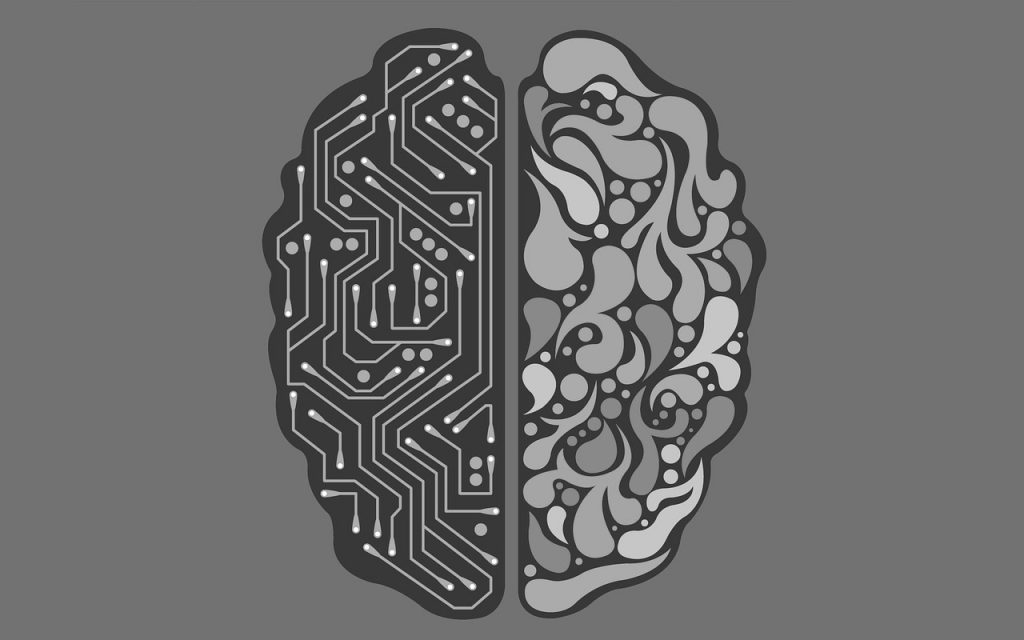Technologies continue to blur the boundaries between the real and virtual world for everyone — your customers, your employees, all stakeholders, and you. As 2018 begins, it’s time for enterprise decision makers to identify the technology trends that have the potential of going big this year. In this guide, we will cover six of these technology trends. Read on.
Application-specific AI components

The potential of AI to transform customer experiences, disrupt and create new business models, and change the nature of decision making has, to large extent, been realized and implemented in enterprise applications. In fact, a Gartner report suggests that about 40 percent of enterprises (out of the surveyed set) have already implemented AI technologies, while almost 60 percent are collecting information and conducting due diligence to implement similar solutions.
For 2018, however, it’s very likely that the hoopla around AI and its potential to magically perform the kind of intellectual tasks that humans can perform will settle down. Here are some key points to note:
- All promised AI applications that could do “amazingly well” if they could “learn the ay humans do” will continue to remain very speculative.
- Instead, enterprises will realize that they would be much better placed to focus on narrow-scoped AI applications that use highly purpose specific machine learning algorithms.
- Research in general AI will continue to prosper, but it’s still time before it matures enough for gainful use in businesses
Rich digital experiences
This is a major one of the strategic technology trends that B2B enterprises need to be watchful about. Rich digital experiences will become increasingly important for retailers. In general, 2017 brought together several changes in the digital retail experience, with technologies like augmented reality and virtual reality coming to the fore in promotional campaigns of the world’s leading retailers. IDC has predicted that by 2020, 40 percent of the world’s leading brands will be offering rich digital experiences to customers in retail stores and beyond.
Retailers, in particular, need to embrace new digital technologies to complement their customers’ in-person experiences. Whether it’s VR and AR technology-powered rich digital experiences for customers, delivered to them at their homes, or chatbots to deliver personalized customer service — retailers need to be ahead of their competitors in their tech game throughout 2018. Employee training, customer engagement, interactive merchandise displays — there will be action in these spaces as well.
Replication of customer engagement to achieve employee engagement

Technological advances in the past five years have changed the concept of “office work.” Today, employees can connect to office applications from home, work on the go, participate in video conferences via their phones, and use virtual assistant applications to improve their work quality.
In 2018, enterprises will look to leverage technologies to achieve employee engagement, just like they’ve done for customer engagement. A Massachusetts Institute of Technology (MIT) Center for Information Systems Research (CISR) clearly points this out. Large companies landing in the top quartile for employee experience quality are 100 percent more innovative and 25 percent more profitable than the ones in the bottom quartile. Digital worker enablement will be at the core of these companies, and for many others.
Again, in this direction, we can expect to see the proliferation of:
- Use of virtual reality to enhance the quality of remote work, meetings, and training.
- Use of chatbots to help employees search for answers to routine questions, understand their efficiency and productivity metrics and get custom feedback on work improvement
- Use of wearable devices that help employees perform their task better, with real-time data-driven insights.
The proliferation of voice in work
Voice proved to be an important strategic technology trend throughout 2017. Apple’s Siri, Amazon Alexa, Microsoft Cortana, and Google Assistant — all made rapid inroads into multiple markets in 2017. The smart speakers market also grew, as did several related markets with voice activation functionalities. Voice-based searches on Google kept on growing.
In 2018, voice is likely to make its way on to enterprise work floors, primarily in the form of virtual assistants that users can interact with using their voice. With natural language processing (NLP) algorithms and machine learning algorithms (ML), these programs will be able to perform a large number of tasks. The potential for voice-activated programs to enable increased productivity and efficiency in daily work will drive enterprise effort and investment into it.
Edge computing to supplement cloud computing
Throughout 2016 and 2017, edge computing remained a vastly misunderstood concept, often wrongly touted as a ‘replacement of cloud computing’. The truth is that edge computing means to complement cloud computing, helping enterprises achieve superb IoT applications.
Edge computing is a topology in which information processing is carried out at the “edge” of the network where it is very close to the source of the information. This is done to achieve applications with very low latency tolerance and bandwidth constraints.
For companies that already have a number of IoT devices generating continuous streams of data to be fed into the analytics engine, 2018 will be the perfect time to invest in edge computing topologies. For applications such as autonomous movement of “things,” such a proactive approach will prove invaluable in helping enterprises.
Smart apps and analytics
We touched upon how narrow AI will grow in 2018. It’s noteworthy that familiar application categories will start using proven AI technologies to deliver enhanced and rich experiences to customers. Also, packaged solution providers of ERP and other enterprise software will look to bring in the power of AI in their applications. By being an intermediary between people and systems, intelligent apps can transform the nature of work, and reshape the workplace. Similarly, smart analytics platforms will augment human activity by automating data preparation activities, analysis, insight extraction, and reporting.
Ride these technology trends into the future
These technology trends are the perfect vehicle for your enterprise to ride on. Evaluate as to which among them will sync well with your enterprise’s business goals, and take the leap.
Photo credit: Pexels



